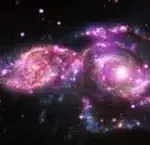
I recently sat down with a close friend, catching up after an out-of-touch year. Both he and his wife suffer from recurring deep depression. Since they enjoy a seemingly vital Buddhist practice, our conversation turned to the fact that the strategies and solutions of “faith” are sometimes unable to shift toxic physical and mental symptoms. Aware of the depth of their experience, I realise that my low-grade depressive state (from which, I’d like to say, Buddhist perspectives and practices have freed me) was something quite different from what troubled them.
But I saw that I too have my “demons/problems” which seem uncontrollable – largely around an inability to settle into purposeful activities that I consider both enjoyable and important. Too easily I succumb to diversions. This gives a sense that ‘my’ spirituality is not working. I can feel locked in a room full of triviality, having lost the key! Although not experienced with the same force as my friend, mine comes with a feeling that hovers between discouragement and disillusion, undercutting the positive claims that I make for the efficacy of Buddhism, in my dharma teaching…and tempting me towards hypocrisy.
Our British National Health Service lists that symptoms of Clinical Depression “can be complex and vary widely between people. But as a general rule, if you’re depressed, you feel sad, hopeless and lose interest in things you used to enjoy.1” Their longer list includes physical, psychological and social discomfort, including lack of energy, disturbed sleep, continuous low mood, feeling hopeless and helpless, lacking motivation and interest, feeling anxiety and worry and guilt, “not getting any enjoyment out of life”.
This deep, continuing depression can be explained and treated by various models: treating the body, the emotions, or the mind. But, for the believer (my friend, for instance) faith complicates (or enriches!) the experience because a long walk with the “black dog” has such similarities with “the dark night of the soul.” This is a widely recognised condition (famously described by the 16th-century Spanish mystic and poet St. John of the Cross). It is a felt state of spiritual abandonment (or spiritual famine) leading to symptoms quite similar (sometimes the very same) as what the medical model describes. Mateo Sol lists seven ‘omens’ of the dark spiritual journey:
- A deep sense of sadness, often verging on despair.
- An acute sense of unworthiness.
- A constant feeling of being lost or condemned to a life of suffering or emptiness.
- A painful feeling of powerlessness and helplessness.
- A weakened will and self-control, which makes it difficult to act.
- A lack of interest and joy in what formerly was a source of excitement.
- A sense of craving to lose something intangible and a longing for a distant place.
Branna West includes 18 symptoms encompassing the same condition.2
A discouraging “spiritual dilemma” for me and my friend is that the practices and disciplines that usually keep us spiritually buoyant seem to collapse from time to time. We aren’t bothered that “bad things happen to good people” (and the converse). This is the way of the world. Neither are we shaken by the fact that all the “practices” and convictions that seem so positive and reliable, don’t seem helpful at times; we know that this is simply a reminder to look more deeply to our motivations and moods. But that “deeper look” does not always lead to insight and self-correction.
There are times when we seem to realise our preoccupation and foolishness, correct it “in all humility” (as much as we can muster), apply all appropriate spiritual practices, and find that we still are “flatlined” spiritually. Some faiths would say, “These things are sent to try us” – addressed so powerfully in the book of Job. But Buddhists (and Spiritual Naturalists) do not relate to the personal, intervening divine. Rather, we seek to awaken ourselves to resources within us (arranging our internal and external “conditions” to be as favourable as possible). It shakes us when all the spiritual resources at hand will not lead us to the joy and freedom that we’ve experienced as normal, and therefore come to expect.
Both I and my friend exercise the usual strategies for developing and maintaining a vital spirituality. These include (combining the both of us):
- counting our blessings;
- mindfulness – experiencing the wonder of the moment;
- daily “devotions” (spiritual exercises) including meditation, dialogue with imagined and projected higher powers (vajrayana practices) and uplifting/instructive readings;
- attending to ethical living, service to others and acts of generosity;
- confession and restitution when we hurt others or let others down;
- participating in our spiritual communities and cultivating spiritual friendships;
- reflecting on dynamic existence (the transitoriness, conditionality and insubstantiality of all that we experience), including the inevitability of one’s own decline and death;
- awareness of and communion and identification with the natural order;
- feeding on “the arts”: poetry, music, paintings and all manner of creative human expression;
- an awareness of our own psychological processes which so often can mislead us, if we remain unconscious of them.
Each reader will have concluded what practices will nurture her best and fullest potential: some are received from the traditions and some independently discovered. Sometimes we create them to meet our individual personalities and circumstances. They become precious (priceless) because they nurture and develop positive aspects of living which are otherwise inaccessible. They seem to make us happier and more helpful to ourselves and others. We like to think of them as evergreen, always working to deliver the effects we desire. But it doesn’t work out that way! Spiritual practices come alive in us and nurture our spiritual growth. But they also can decline and die, or seem to lead us away from our vital core. What was essential in the past might feel outgrown. And in the “dark times” they seem wholly irrelevant and powerless. It’s a shaking experience. My friend gets “depressed.” I become “aimless”.
The distressing hell of it is that we’ve had such positive times, and therefore feel we know better. The fruit of our active spirituality has left us. Or worse, we sense that we have left it.
Through lengthy and extensive mindfulness training, my friend and I can sense not only when we’re stuck in some undesired state, but (often) how. We see the failings of our own mental processes, but cannot do anything to change them. We know intellectually both the cause and the antidote of our distress, or at least we think we do! Yet we are unable to replicate the has been good; and the tried and true corrections of our faults similarly stop working. We might go through the motions of past patterns, expecting them to work. When they don’t we feel abandoned, discouraged, humiliated, and confused.
How do we understand these dark times? There’s no one answer, but I favour an analysis that centres around human integration. To be “holy” is to be “whole”, that is, to experience human complexities and ambiguities as coming together in a functional unity. Sometimes we are well aware of conflicts, and are challenged to resolve them consciously, perhaps calling in the advice and support of others. But at other times (distressing times) the conflict comes from our unconscious, that part of us that lurks in the shadows and hides in the darkness. When we are ready it emerges: exposing us to aspects of ourselves which we have perceived as unacceptable, destructive, consuming and therefore deeply threatening.
We can reject such moments of self-realisation. Two common ways to resist them are self-loathing (admitting the reality, but seeing our best selves as defeated by it) or projecting these qualities outside us, demonising them as evils which must be eliminated. Because they are so powerful as to seem undefeatable, they drag us down; no wonder we seek easy escapes. But there is a third way: to face them and resolve them.
Perhaps the sense of being spiritually unsustained comes from our outgrowing the methods we use to nurture our development. There are aspects of our being which, though potentially positive, are not seen in that light. They are forced to hide in the shadows by the very practices we use or, more often, by the way we use and interpret these spiritual helps. Our experience of drowning in (being swallowed by) the darkness is a means of forcing us to abandon one fruitful but now futile practices. Once we have realised the need to integrate these new dimensions, once we have discovered how they can be harnessed to take us forward, the light begins to dawn. Often we embrace the meaning and methods of our former – now enlarged – faith, but with new understandings. Thus their helpfulness to our wholeness increases.
“The fresh dawning light is preceded by the darkest moments.” This cliché orients us to hope, perhaps our only resource in such times. Whatever our faith – religious or secular, transcendental or transformational – hope gives us an element of positive expectation. In the midst of depression and discouragement, when nothing’s working, we sense the larger reality behind the practices that themselves are not “performing.” If we’ve lived with faith long enough, we will likely remember times when the light flooded into our darkness, and we felt our pilgrim feet were once again on the path we’d been so glad to walk.
A close friend who has “been through it” says that his experience is that the “long night” seems to swallow our spiritual satisfactions, but not completely. We still have a measure of hope, which is a powerful resource, no matter how small and vulnerable it seems. And he is convinced that this lets us connect with some element of our past practice. This can keep us going. For him it was saying a mantra that evoked an image of Avalokiteshvara, the personification of compassion, albeit dimly and without much emotional uplift. But, finally, there was a new dawning of the light, which came with some fresh and unexpected revelations of its splendour. My wife knows a man who was trapped in this darkness, sapping his spiritual strength. All that he could manage was, a few words of the ‘Jesus prayer’: “Lord, have mercy”. It wasn’t much, but it was enough.
A final thought: perhaps we are simply not as autonomous as we think. There may be times when our particular nature (hidden scarring from our past, hormonal balance, etc.) betrays us or reflects forces outside us. Our inexplicable spiritual frustrations might simply be expressions of wider realities within nature that are beyond our imagining. All these are part of who we need to integrate if we are to be truly whole.
Whatever the cause, we are not alone in experiencing the frustrations of ineffectual spirituality from time to time, and indeed over long periods. We need not be discouraged or fearful of them. They are – at least they can be – holy reminders of our continuing fragilities and inabilities, springing from our incomplete integration and thus keeping us humble and alive to our deepest needs. After all, the opposite of faith is not doubt, but certainty. And our suffering might well be a reminder to keep searching the horizon for the yet to be discovered.
“Out of suffering have emerged the strongest Souls; the most massive characters are seared with scars”.3
Learn about Membership in the Spiritual Naturalist Society
__________
The Spiritual Naturalist Society works to spread awareness of spiritual naturalism as a way of life, develop its thought and practice, and help bring together like-minded practitioners in fellowship.”
ENDNOTES:
- https://www.nhs.uk/conditions/clinical-depression/symptoms/
- https://thoughtcatalog.com/brianna-wiest/2017/02/18-signs-youre-going-through-whats-known-as-a-dark-night-of-the-soul/
- Edward Hubbel Chapin, misattributed to Khalil Gibran.












